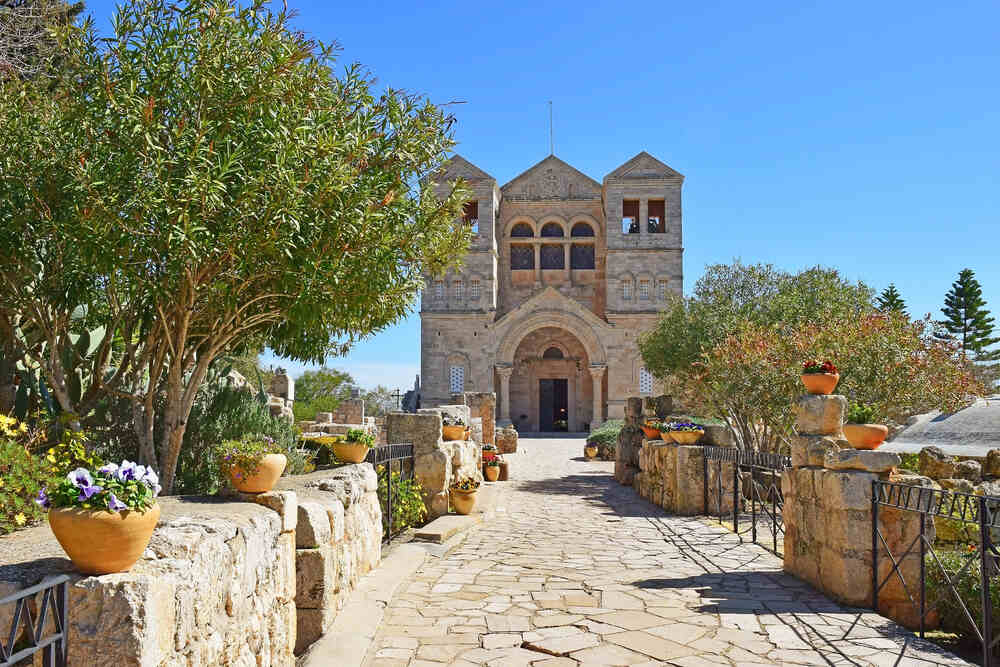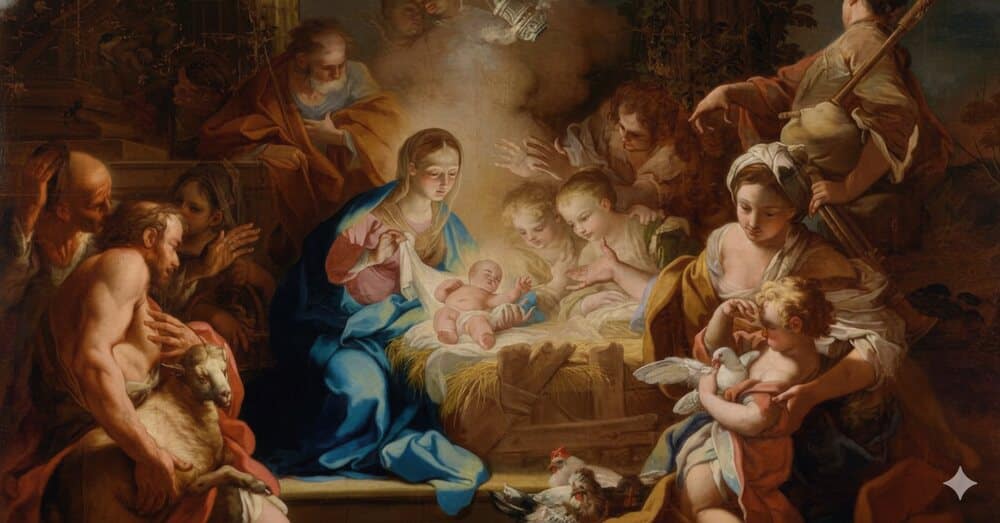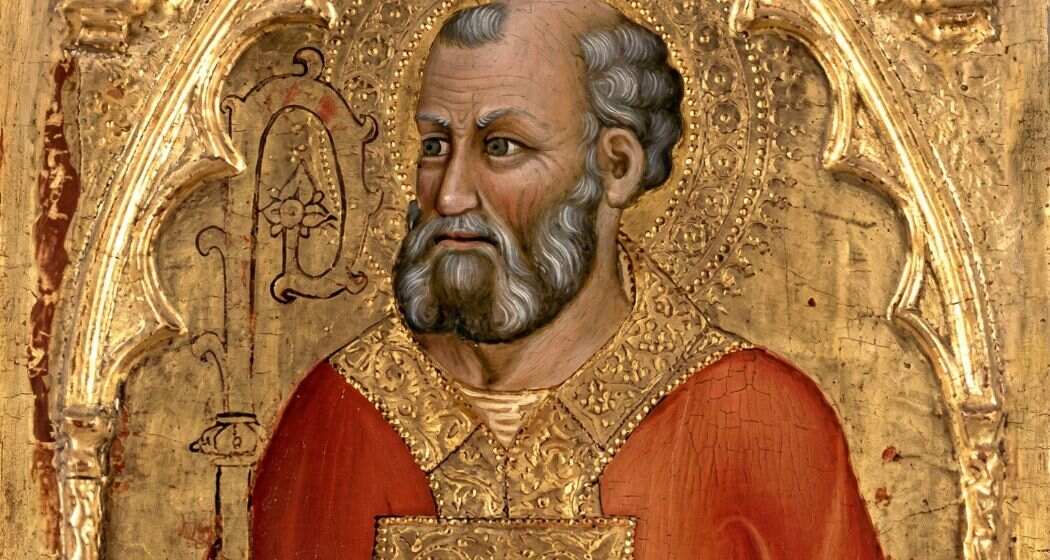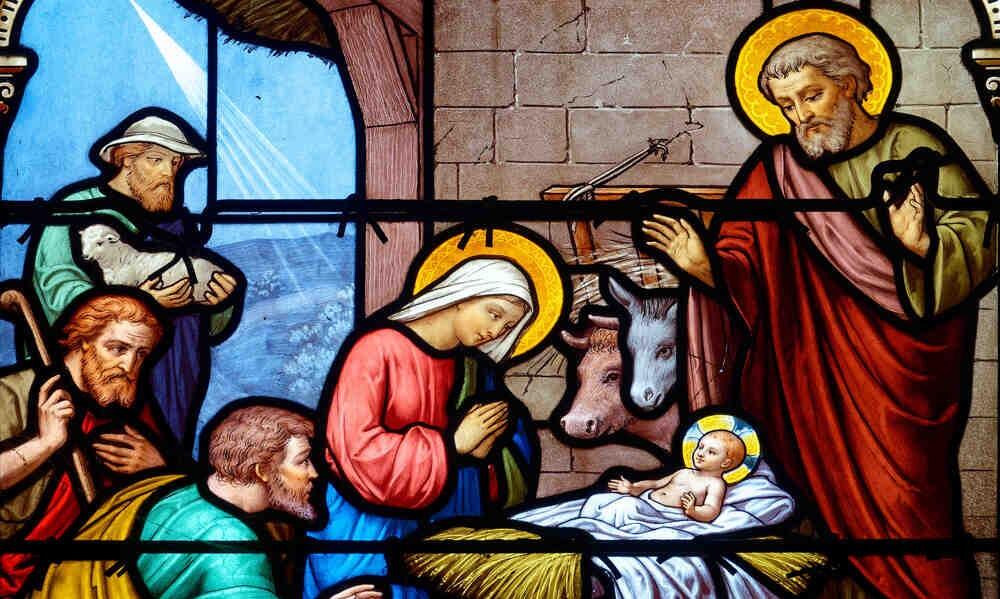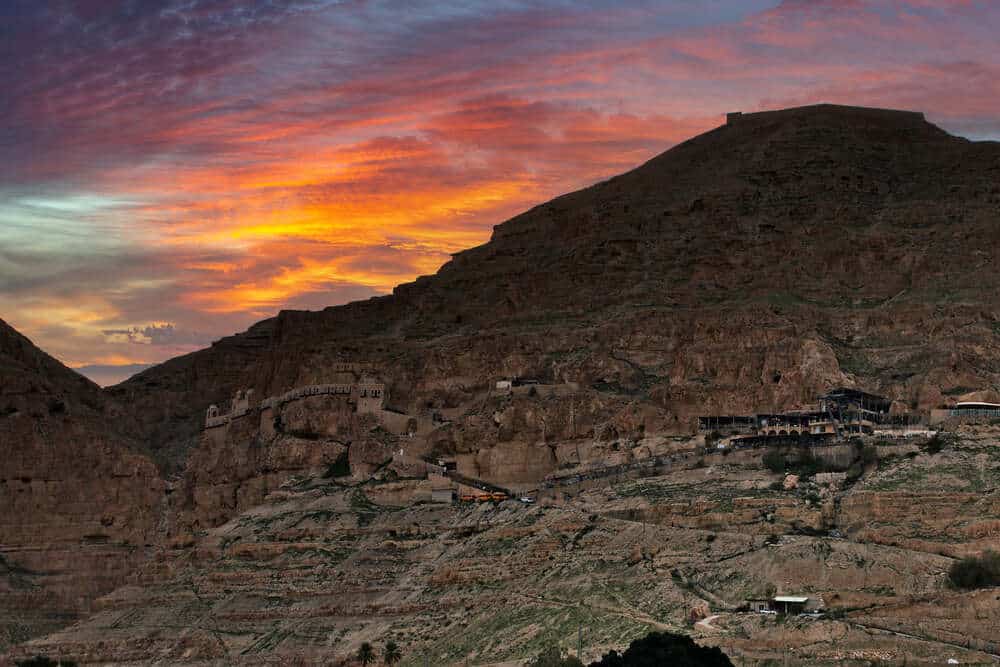Galilee is located in northern Israel, between the Jezreel Valley and the mountains of Lebanon, and is traditionally divided into Upper and Lower Galilee. It is a region of green hills, lakes, and fertile valleys—quite different from the arid landscape of Judea. At its heart lies the Sea of Galilee—also known as the Lake of Tiberias or Gennesaret—surrounded by small fishing villages and sacred mountains such as Mount Tabor and the Mount of Beatitudes.
In the time of Jesus, Galilee was an agricultural and commercial area crossed by trade routes that connected Syria, Phoenicia, and Jerusalem. Although under Roman rule, it maintained a popular identity—simple, humble, and deeply religious.
It was in this land that Jesus spent most of His earthly life: He grew up in Nazareth, called His first disciples by the lake, preached in the synagogues, worked miracles, and proclaimed the Kingdom of God in villages and along the roads.
In this post, we share a mini guide to 9 holy places every Catholic should visit on a pilgrimage through Galilee. We’ll journey from Mount Tabor—where Jesus was transfigured before His disciples—to the humble villages that witnessed His hidden life, the beginning of His ministry, His miracles, and His teachings.
1. Basilica of the Annunciation (Nazareth)
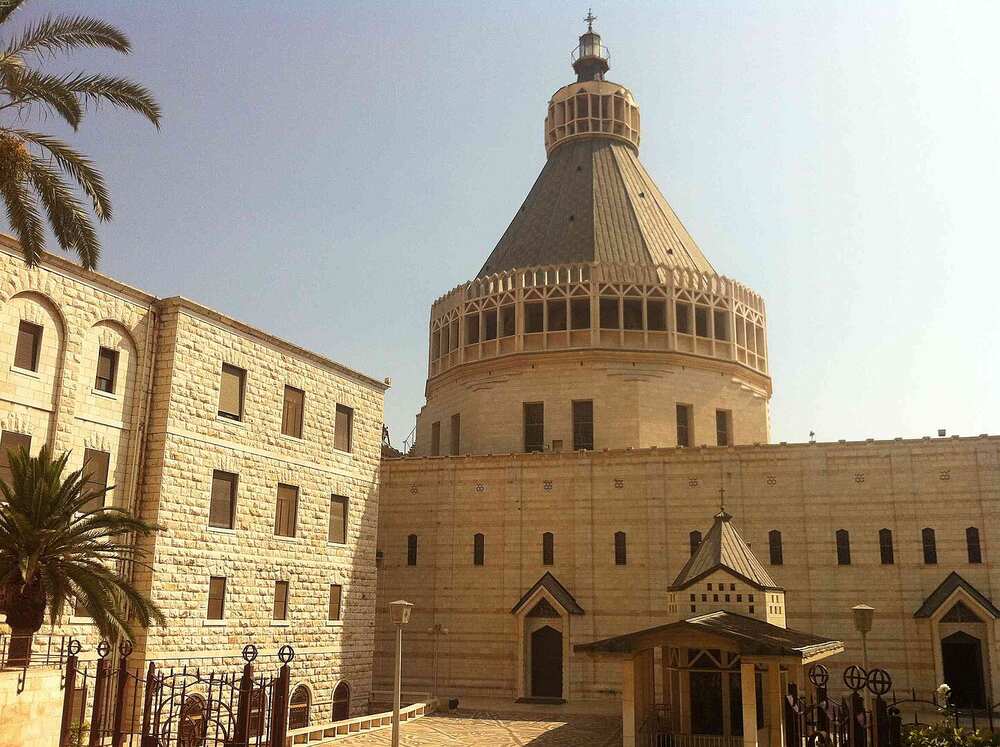
By FLASHPACKER TRAVELGUIDE – Nazareth | Verkündigungbasilika | Church of Annunciation, CC BY-SA 2.0, https://commons.wikimedia.org/w/index.php?curid=67247202
The Basilica of the Annunciation, in Nazareth (Israel), stands over the house where the Archangel Gabriel announced to the Blessed Virgin Mary that she would be the Mother of the Savior. Guarded by the Franciscans, it is the largest Christian church in the Middle East and one of the most important pilgrimage destinations in the Holy Land.
The present building, consecrated by Pope Paul VI in 1969, combines modern architecture with Byzantine and Crusader remains. The façade, designed by sculptor Angelo Biancini, represents the mystery of the Incarnation through reliefs and biblical inscriptions. Outside, a courtyard surrounded by a portal displays mosaics of Marian devotions from around the world, donated by various countries.
The basilica has two levels: the lower level houses the Grotto of the Annunciation, believed to be Mary’s home. A Latin inscription recalls: “Verbum caro hic factum est” (“Here the Word was made flesh”). Visitors can see archaeological remains, mosaics, and walls from the ancient Byzantine and Crusader churches.
The upper church, bright and spacious, is adorned with Marian images sent from all over the world, colorful stained glass, and a majestic mosaic proclaiming the Church as “One, Holy, Catholic, and Apostolic.”
From the upper courtyard, visitors can access the archaeological museum, which preserves artifacts found during excavations and traces the development of the sanctuary through the centuries. The entire complex invites pilgrims to contemplate the mystery of the Incarnation, in the very place where Mary uttered her “yes” and offered herself as the handmaid of the Lord.
- For more information about this church, visit the website of the Custody of the Holy Land.
- Location: Al-Bishara St 12, Nazareth, Israel.
2. Church of St. Joseph (Nazareth)
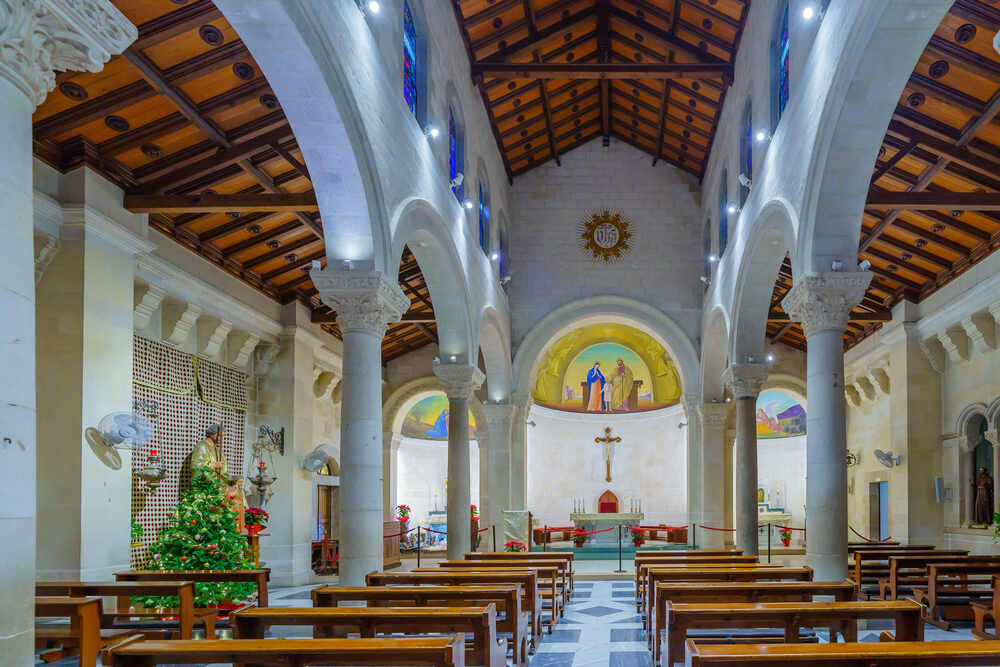
Just a few meters from the Basilica of the Annunciation stands the Church of St. Joseph, also known as the Church of the Nutrition, built on the traditional site of St. Joseph’s house and carpentry workshop. According to tradition, this is where the hidden life of Jesus unfolded—where He lived in obedience and learned His earthly father’s trade.
The site has been venerated by Christians for centuries: from a church mentioned by the pilgrim Arculf in the 7th century to later Crusader and Franciscan sanctuaries. The current neo-Romanesque church, built in 1914 over ancient ruins, belongs to the Latin Patriarchate of Jerusalem. In the crypt, visitors can see archaeological remains, ancient grottos, and a small baptismal pool decorated with mosaics, possibly used by the early Christian community.
- For more information about this church, visit the website of the Custody of the Holy Land.
- Location: P73X+788 Nazaret, Israel.
3. Wedding Church at Cana (Kfar Kanna)
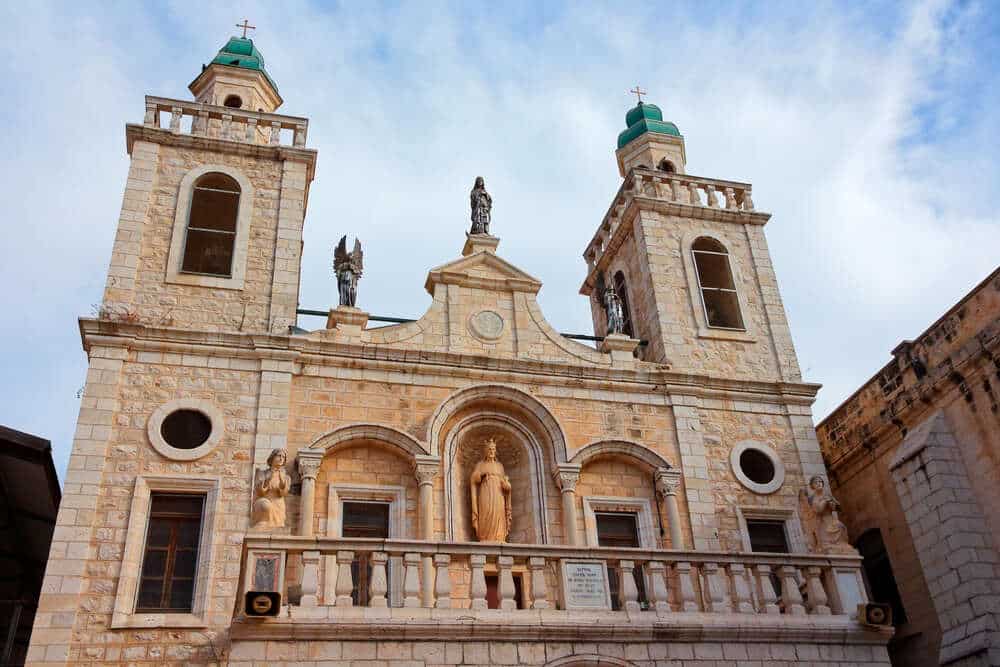
The Church of the Wedding at Cana, located in Kafr Kanna (Cana), in Lower Galilee, Israel, commemorates the miracle in which Jesus transformed water into wine during a wedding feast. The site has held religious significance since the 4th century, when a synagogue once stood there, later replaced by a Christian chapel that fell into ruin around 1551.
The Franciscans of the Custody of the Holy Land began acquiring the property in 1641, completing the purchase in 1879. The current façade was built in 1901, and the altar was consecrated in 1906 by Bishop Angelo Roncalli, the future Saint John XXIII. Between 1997 and 1999, archaeological studies were conducted, followed by a full restoration of the church.
Today, many pilgrim couples visit this sacred site to renew their marriage vows.
- For more information about the Church of the Wedding at Cana, visit the website of the Custody of the Holy Land.
- Location: P.O.B. 1580, 16930 Kafr Kanna, Israel.
4. Church of the Beatitudes (Tabgha, Sea of Galilee)
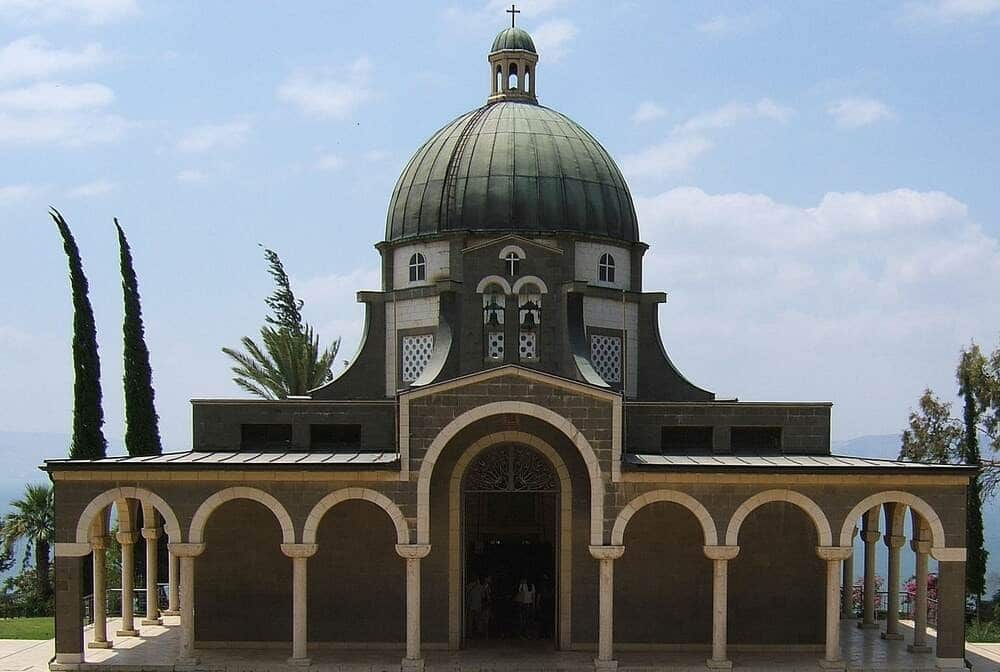
Dominio público, https://commons.wikimedia.org/w/index.php?curid=1579448
The Church of the Beatitudes, built between 1936 and 1938 by Antonio Barluzzi, stands on a hill overlooking the Sea of Galilee, near Tabgha and Capernaum, on the traditional site where Jesus delivered the Sermon on the Mount. Since the 4th century, pilgrims have come to this revered place in the Holy Land.
The church has an octagonal floor plan, symbolizing the eight beatitudes, and is surrounded by a portico. Inside, the central altar is crowned by an alabaster arch, and the tabernacle, elevated on porphyry, displays bronze-gilded scenes of the Passion. Eight stained-glass windows in the dome bear the beatitudes from the Gospel of Matthew. On the floor, a mosaic features symbols of virtues such as faith, charity, and prudence.
Today, the church is under the care of the Franciscan Missionary Sisters.
- For more information about this church, visit the website of the Church of the Beatitudes.
- Location: 90, Tiberias, Israel.
5. The House of Saint Peter (Capernaum)
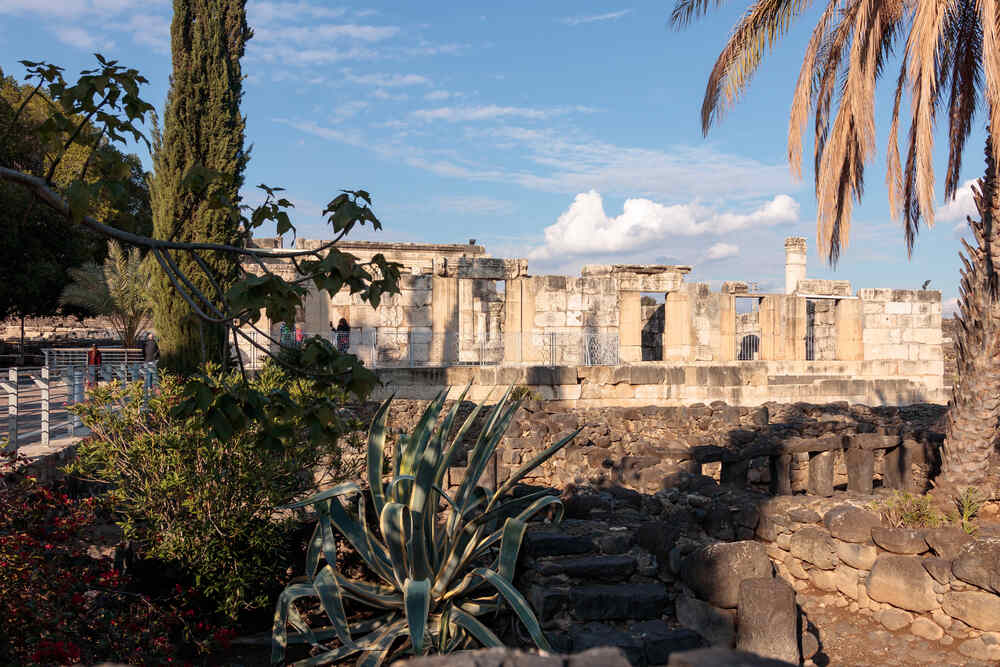
Located on the northern shore of the Sea of Galilee, Capernaum was a small fishing town in ancient Galilee and one of the most frequently mentioned places in the Gospels. Known as “the town of Jesus,” it became the main center of His public ministry after He left Nazareth.
Here, Jesus taught in the synagogue, performed numerous miracles — including the healing of the centurion’s servant, the paralytic, and Peter’s mother-in-law — and called Matthew to follow Him. According to the Gospels, Capernaum became His home base while He preached throughout the region.
Among the holy sites that can be visited are:
-
The ruins of the ancient synagogue, built of white limestone in the 4th century on top of the remains of the synagogue from Jesus’ time — the very place where He is said to have preached and healed.
-
The House of Saint Peter, located just a few meters from the synagogue. Archaeological excavations identified it as a 1st-century home used by the early Christian community. A Byzantine octagonal church was later built over it, and in modern times a Franciscan shrine was constructed above, allowing visitors to view the ancient remains through a glass floor.
Today, Capernaum is part of an archaeological site administered by the Franciscans, preserving an atmosphere of deep historical and spiritual significance — a living witness to the ministry of Jesus in Galilee.
- For more information about this holy place, visit the website of the Custody of the Holy Land.
- Location: VHJF+48M Cafarnaúm, Israel.
6. Church of the Multiplication of the Loaves and Fishes (Tabgha)
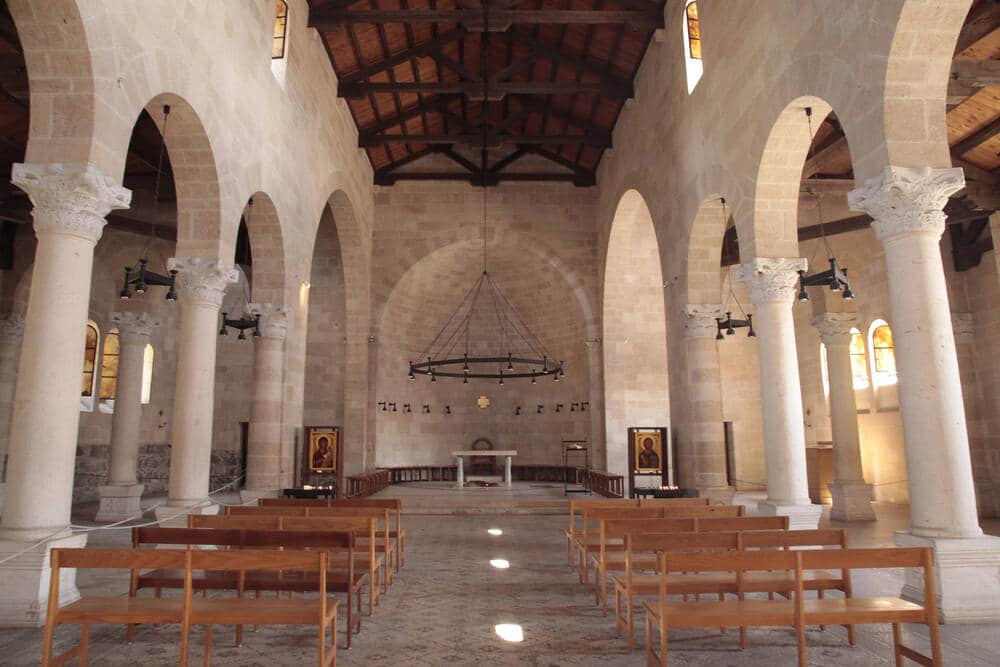
The Church of the Multiplication, located in Tabgha on the northwestern shore of the Sea of Galilee, commemorates the miracle of the multiplication of the loaves and fishes, as recounted in the Gospel of Mark (6:34–44).
The first church on the site was mentioned around the year 380 by the pilgrim Egeria. In the 5th century, a Byzantine basilica was built and decorated with stunning mosaics depicting the flora and fauna of the region. After its destruction in 614, the site remained forgotten for over a thousand years until it was acquired by a German Catholic society in the 19th century.
The current church, inaugurated in 1982, faithfully follows the original Byzantine floor plan and preserves beneath its altar the famous mosaic of a basket with four loaves, a powerful symbol of the miracle. The shrine is administered by the Benedictine Order and stands beside a modern monastery.
- For more information about this church, visit the Church and Monastery of the Multiplication of the Loaves.
- Location: Tabgha, Israel.
7. Commemoration of the Public Ministry of Jesus and Mary Magdalene (Magdala)
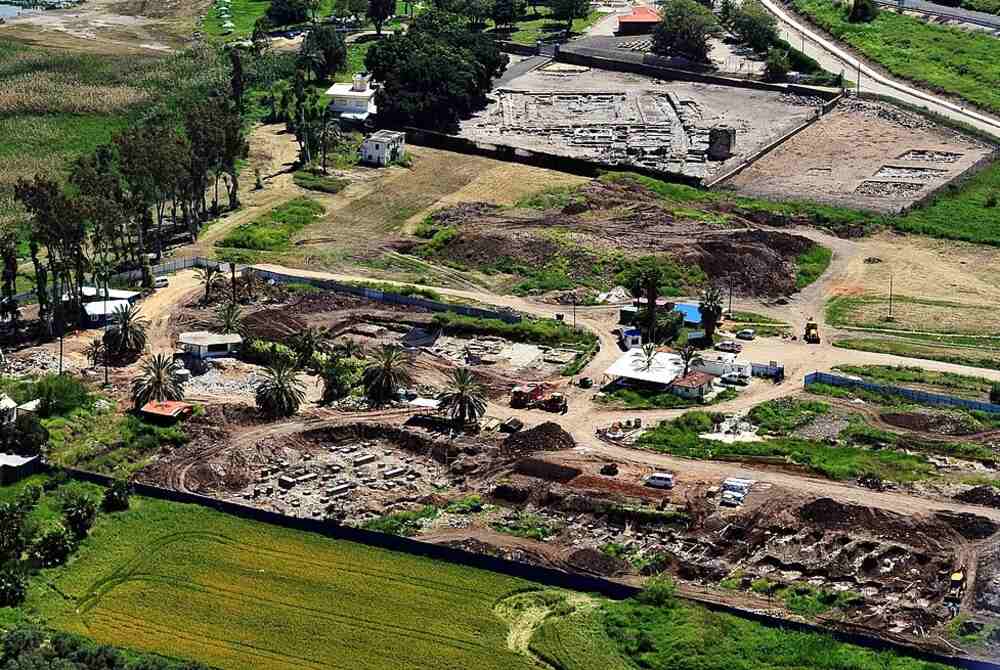
By AVRAM GRAICER – Own work, CC BY-SA 3.0, https://commons.wikimedia.org/w/index.php?curid=36308180
Located on the western shore of the Sea of Galilee, about six kilometers north of Tiberias, Magdala —known in ancient times as Tarichea, meaning “salted fish”— was a thriving city dedicated to fishing and fish processing during the Hellenistic and Roman periods.
Archaeological excavations begun in 2009 uncovered a 1st-century synagogue, one of the oldest in Galilee, featuring a mosaic floor and a carved stone symbolically depicting the Temple of Jerusalem. Remains of homes, streets, storerooms, and fish-processing tanks have also been found, offering evidence of the city’s bustling economic life before its destruction during the First Jewish War (66–70 A.D.)
Christian tradition identifies Magdala as the hometown of Mary Magdalene, disciple of Jesus, witness to His crucifixion and resurrection, and the first to see Him risen according to the Gospel of John. Her figure —a symbol of conversion and fidelity— keeps alive the memory of this ancient Galilean town, today known as Migdal.
- For more information about this holy site, visit the Custody of the Holy Land website.
- Location: RGJ6+F93 Migdal, Israel.
8. Basilica of the Transfiguration (Mount Tabor, Galilee)

Por Liorca – Trabajo propio, CC BY-SA 4.0, https://commons.wikimedia.org/w/index.php?curid=62632427
Mount Tabor, located east of Nazareth, rises 588 meters above sea level and stands out among the hills of Galilee. Since the early centuries, Christians have identified it as the site of Christ’s Transfiguration, although the Gospels do not name it explicitly.
Before the Christian era, Tabor was a Canaanite sanctuary dedicated to Baal, whose cult later spread to Rhodes under the name of Zeus Atabyrios. In biblical times, it was the setting of Deborah and Barak’s victory over the Canaanites and served as a refuge during times of war. Over the centuries, it was fortified by Romans, Crusaders, and Saracens, and traces of those fortifications can still be seen today.
By the 6th century, basilicas already stood there, representing the “three tents” mentioned in the Gospel narrative. The Crusaders entrusted the site to the Benedictines in 1101, but after the invasions of Saladin and Baibars, the churches were destroyed. Despite the desolation, the Franciscans revived the annual pilgrimage in August of 1620, and in 1631 they were permitted to settle there again, alongside the Greek Orthodox.
In 1924, the Franciscans built the present Basilica of the Transfiguration, designed by Antonio Barluzzi. Built in the Syro-Roman style, it rises on ground venerated since Byzantine times. Its three naves lead to the main altar, crowned by a mosaic of the Transfiguration. The side chapels are dedicated to Moses and Elijah, and the crypt preserves the ancient apse with its mosaics.
The terraces of the basilica offer magnificent views: to the east, the Golan Heights and Gilead; to the south, Samaria and Mount Gilboa; to the west, Mount Carmel and Nazareth; and to the north, Safed and Mount Hermon. These mountains of the Holy Land have witnessed pivotal events in the history of salvation.
- For more information about this church visit the website of the Custody of the Holy Land.
- Location:M9PR+GX5 Shibli, Israel
9. Church of the Primacy of Saint Peter (Tiberias)
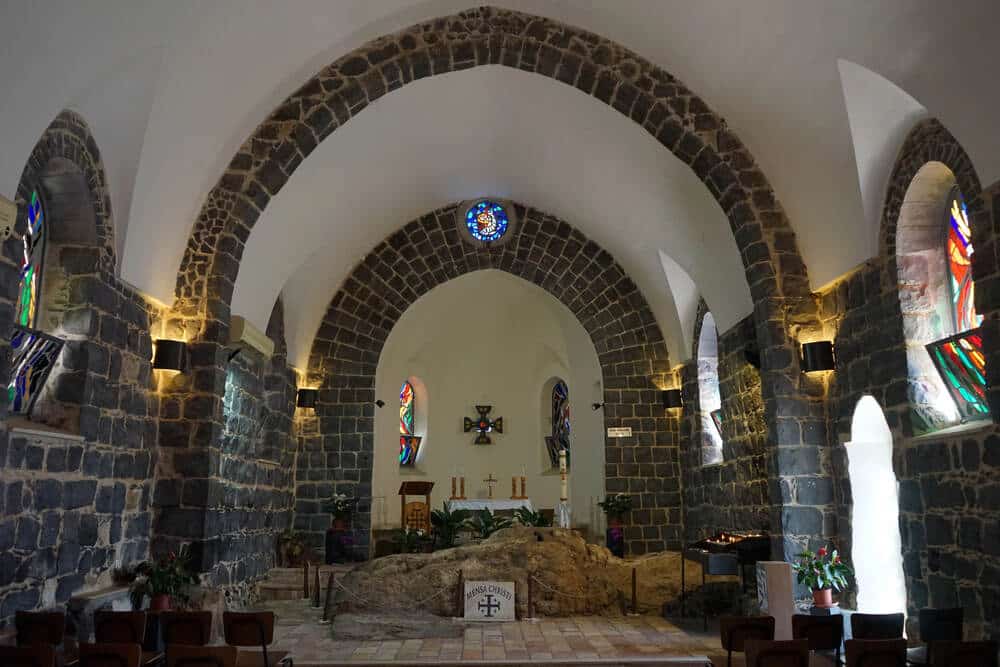
The Sea of Galilee, also known as Lake Tiberias or Lake Gennesaret, is a freshwater lake in northeastern Israel, about 210 meters below sea level. It stretches roughly 21 kilometers in length and 13 kilometers at its widest point, surrounded by gentle, fertile hills. Its waters are fed primarily by the Jordan River, which flows down from Mount Hermon and continues toward the Dead Sea.
This lake and its surroundings were the setting for numerous events in the Gospels. Here, Jesus called His first disciples —Peter, Andrew, James, and John— who were fishermen; preached to the crowds from a boat, calmed the storm, and confirmed Peter’s mission. On its shores stands a church dedicated to the Primacy of Peter.
Located near the traditional site of the Multiplication of the Loaves and Fishes, this sanctuary commemorates the episode described in John 21:1–19, when the Risen Jesus appeared to His disciples, shared a meal with them by the lake, and entrusted Peter with the care of His Church with the words: “Feed my sheep.”
The present-day church, administered by the Franciscans, was built in 1933 over the remains of a 4th-century church that was destroyed during the Middle Ages. Inside, visitors can see a large basalt rock known as the Mensa Christi (“Table of Christ”), which, according to tradition, marks the spot where Jesus prepared breakfast for His disciples.
The site preserves a peaceful atmosphere, with gardens and stone steps descending to the lakeshore —a place that recalls the miraculous catch of fish and Jesus’ encounter with Peter, a powerful symbol of forgiveness and the beginning of his pastoral mission.
- For more information about this holy place, visit the website of the Custody of the Holy Land.
- Location: QGQV+726 Tiberíades, Israel.
If you want to visit these churches, remember that your Catholic Mass Times app will be your best travel companion. It will help you find local Mass schedules, Confession services, and Adoration times, ensuring that your spiritual pilgrimage is always connected to the sacraments. Download it now.
Galilee is the living memory of the Son of God —the land of His hidden life and the beginnings of His public ministry. Here you can literally walk in the footsteps of the Lord, meet countless brothers and sisters in Christ from around the world who seek the same encounter, and bring comfort to the local Christians who continue to suffer persecution for their faith.
To make the most of your pilgrimage, we recommend bringing a guidebook with explanations and information about the sacred sites, along with meditations, Scripture passages, and prayers to help you live this journey in a true spirit of contemplation.
It is also highly advisable to travel through the Holy Land with your Bible — especially the Gospels. You can read the passages beforehand to prepare your heart, or during your visit to meditate more deeply. How beautiful it would be to go with a group of pilgrims accompanied by a priest, so that he can celebrate Holy Mass in the sacred places and provide spiritual guidance throughout your journey.
Are you planning a trip and would like to visit churches at your destination? Take a look at our other articles to discover inspiring places of faith in the Holy Land:
- 10 Must-See Churches in the Holy Land: A mini guide with 10 churches every Catholic should visit on a pilgrimage through the Holy Land, inspired by the Mysteries of the Rosary.
- 7 Holy Places to Visit in Jerusalem: The most important and decisive sites in the life of Jesus —and of our faith— in Jerusalem.
- Following Jesus: 3 Sites in Judea: Walk in the footsteps of Jesus and Saint John the Baptist across the region of Judea.
Where is Galilee and why is it important for Christians?
Galilee is located in northern Israel, between the Jezreel Valley and the mountains of Lebanon. It’s deeply significant for Christians because it’s where Jesus lived most of His life, preached, performed miracles, and called His first disciples.
What happened on Mount Tabor according to the Gospels?
Mount Tabor is traditionally identified as the site of the Transfiguration, where Jesus revealed His divine glory before Peter, James, and John — a key moment in His ministry.
What are the most important churches to visit in Galilee?
Some of the most notable are the Basilica of the Annunciation and the Church of Saint Joseph in Nazareth, the Church of the Beatitudes, the Basilica of the Transfiguration on Mount Tabor, and the Church of the Primacy of Saint Peter in Tiberias.
What miracles did Jesus perform at the Sea of Galilee?
At the Sea of Galilee, Jesus calmed the storm, walked on water, multiplied the loaves and fishes, and performed the miraculous catch of fish. Many of these events are commemorated by churches along the lakeshore.
Can these sites be visited today?
Yes. All of them are active pilgrimage sites cared for by the Franciscan Custody of the Holy Land. Visitors can attend Mass, join guided tours, and experience moments of prayer and reflection in the very places where the Gospel came to life.

